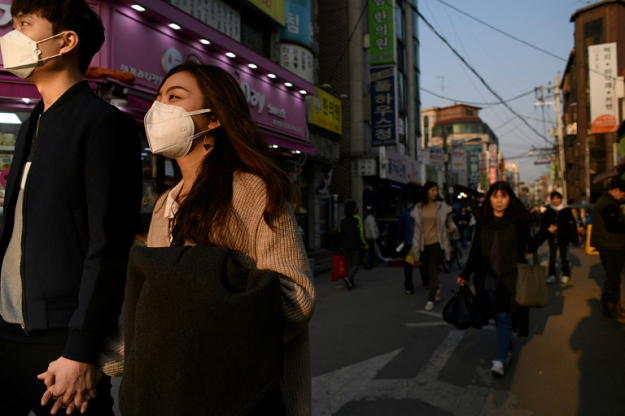
Many South Koreans blamed China when pollution surged for three days earlier this month, and on Friday the Korea Meterological Administration (KMA) sent an aircraft to seed clouds with silver iodide in the hope of promoting rain.
The intention was for the rain to douse airborne particles and pollutants known as 'fine dust' in South Korea. However, an initial analysis of the experiment has been disappointing, KMA said in a preliminary report issued on Monday.
While a weak, misty rain was detected for several minutes, the agency said, "there was no observation of significant precipitation".
"Aside from its success or failure, the test was an opportunity to accumulate the necessary technology for a faster commercialisation of cloud seeding," it added.
A full report is expected to be released later next month.
South Korea in airborne fight against 'Chinese' pollution
Air quality in South Korea is generally better than in China, which is more frequently affected by choking bouts of filthy air.
South Korean President Moon Jae-in last week advised his officials to handle the issue as a 'natural disaster' as he urged cooperation with Beijing, addressing "great public concerns about fine dust coming from China".
Beijing is also trying to tackle the scourge, which causes widespread public anger, and a recent study found urban levels of PM2.5 -- the tiny airborne particles considered most harmful to health -- had been cut by almost a third on average over four years.
But they remain far above World Health Organisation norms, and pollution levels in Korea sometimes spike as the prevailing winds blow PM2.5 particulates across the sea between the two countries.
China, which according to the International Energy Agency uses coal to generate around three quarters of its energy, is regarded as the world's biggest polluter.
Last year, South Korea shut down five ageing coal-fired power plants in a bid to improve its air quality.







1732881519-0/Express-Tribune-(6)1732881519-0-270x192.webp)
1732874090-0/BeFunk_§_]__§-(1)1732874090-0.jpg)

1732865927-0/Untitled-design-(74)1732865927-0-270x192.webp)






COMMENTS
Comments are moderated and generally will be posted if they are on-topic and not abusive.
For more information, please see our Comments FAQ